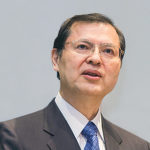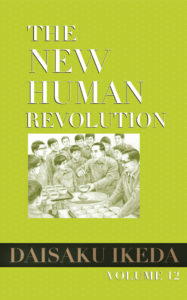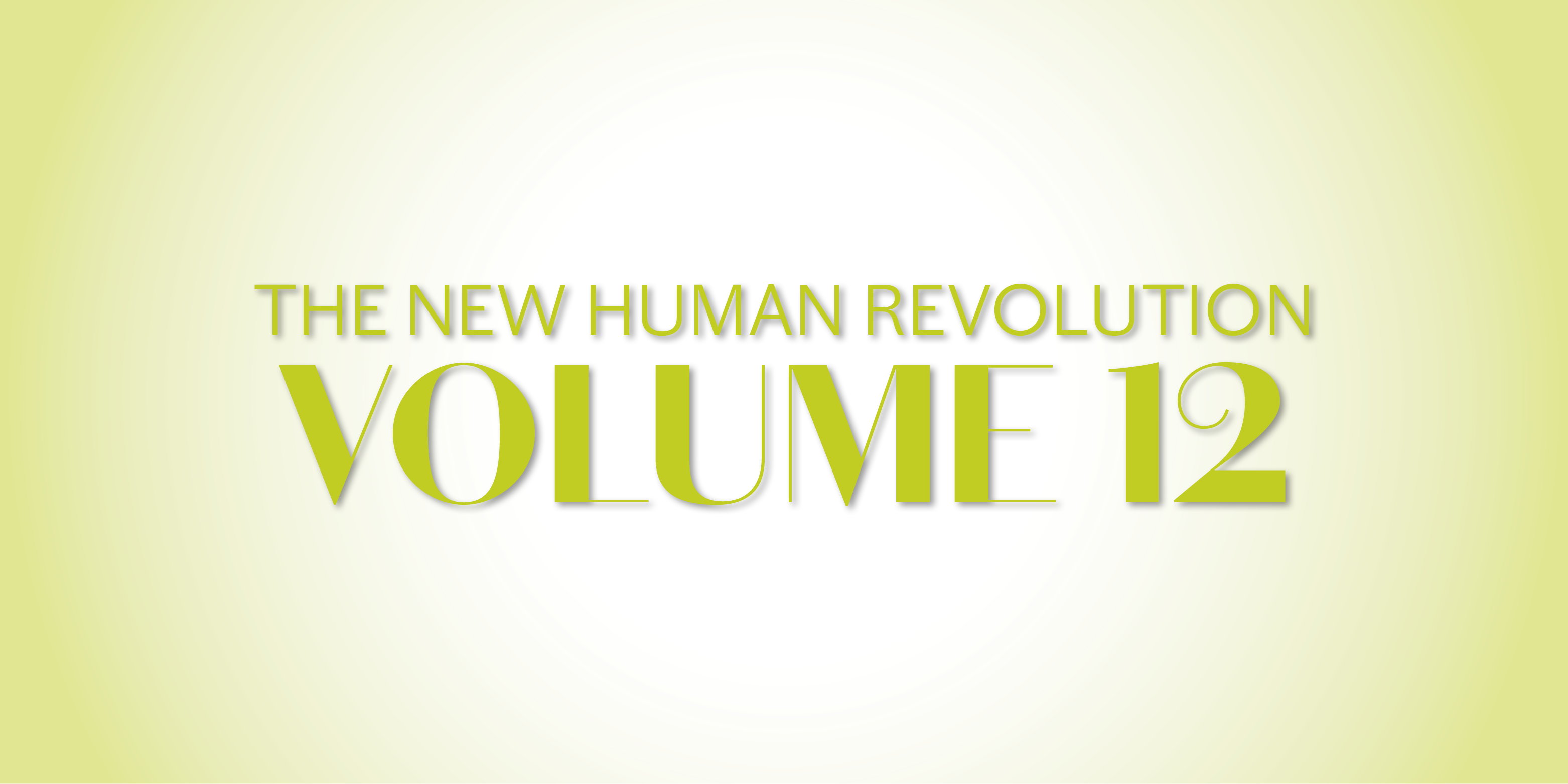 The “Community Spirit” chapter of volume 12 of The New Human Revolution details how the members in Matsushiro, a town in Nagano Prefecture, support one another during a tumultuous period of continual earthquakes beginning in 1965 and lasting for more than five years. In addition to their impact on the physical infrastructure of the area, the earthquakes cause a great deal of mental and psychological damage to the residents. In spite of these conditions, the members in Matsushiro persist in their efforts to expand their network of support and encouragement in the community.
The “Community Spirit” chapter of volume 12 of The New Human Revolution details how the members in Matsushiro, a town in Nagano Prefecture, support one another during a tumultuous period of continual earthquakes beginning in 1965 and lasting for more than five years. In addition to their impact on the physical infrastructure of the area, the earthquakes cause a great deal of mental and psychological damage to the residents. In spite of these conditions, the members in Matsushiro persist in their efforts to expand their network of support and encouragement in the community.
A few weeks ago [from October 2–20, 2019], here in Japan, Typhoon Hagibis caused catastrophic damage across the country. Allow me to take this moment to express my heartfelt sympathy to those affected by the disaster. Let us offer sincere prayers for their lives to be back in order as soon as possible and for the early restoration and reconstruction of the affected areas.
Volume 12 was published in daily installments in the Seikyo Shimbun[1] from April 20, 2001, making it the first volume to be serialized in the new century. These daily installments were truly instrumental in creating the rhythm of advancement for kosen-rufu in the 21st century.
The “Fresh Hope” chapter begins with a description of the headquarters general meeting that took place on May 3, 1967, marking the seventh anniversary of Shin’ichi Yamamoto’s inauguration as third Soka Gakkai president. He addresses the participants as follows:
The next seven years … will be an even more significant period than the one beginning with the founding of the Soka Gakkai and leading up to now. It will be a time of solidifying the foundation of our movement, in which our ultimate victory or defeat will be determined.[2]
In the seven years following Shin’ichi’s inauguration, the Soka Gakkai’s membership expanded from 1.4 million households to 6.25 million, and the number of chapters also increased from 61 to an astounding 3,393 in Japan alone. Against the backdrop of this rapid development, Shin’ichi presents mottoes to the members in each region. For instance, to the members in Shikoku, “Be Reformers Building a Land of Happiness,” and to the Tohoku region, “Be a Citadel of Capable People.” Today, these mottoes have come to characterize the spirit of the members in each area and are part of the proud tradition of kosen-rufu in those regions.
For our movement, mottoes have served to instill in members a sense of pride in their community and the importance of fulfilling their mission where they are right now. At this major juncture in 1967—with the Soka Gakkai aiming to solidify the foundation for kosen-rufu through continued advancement—Shin’ichi brings the focus back to promoting kosen-rufu in one’s local community.
In October, Shin’ichi meets with Count Richard Coudenhove-Kalergi, an early proponent of European integration, and engages with him in what becomes a dialogue between civilizations. As described in the “Dance of Life” chapter, Shin’ichi “considered this man—eagerly seeking the means to achieve world peace—to be a true comrade.”[3] To him, anyone who shares the same purpose and advances with the same spirit is a “true comrade” regardless of religious differences. Because his dialogues are founded on genuine respect for the other person, they generate a resonance at the level of the human spirit and lead to the forging of strong heart-to-heart bonds with each person.
The chapter also describes Shin’ichi’s conviction that mutual understanding and friendship can only come about through face-to-face encounters—such is the power of dialogue. World peace starts when we strive to develop friendship with a single person in our immediate environment. In that sense, our movement aimed at expanding circles of dialogue in our local communities is increasingly taking on greater significance.
Making Shin’ichi’s Spirit Our Own
“The task of realizing kosen-rufu is the responsibility of the youth division.”[4] This is Shin’ichi Yamamoto’s consistent expectation for the youth.
In the “Fresh Hope” chapter, he shares four principles to keep in mind when nurturing young people:
1) To be firmly determined to support them in becoming even more capable than ourselves, empowering them to fully develop their potential;
2) To help them gain a thorough under-standing of the basic thinking and behavior of a leader of kosen-rufu;
3) To entrust them with specific assignments, and give them opportunities to take the lead;
4) To inspire them to use their hardships as a springboard for deepening their faith.[5]
These four points comprise the universal formula for nurturing the youth division of the Soka Gakkai.
Volume 12 also provides detailed accounts of the earnest struggles of youth members living overseas, as well as the hardships faced by some of the performers at the Tokyo Culture Festival held that year. These accounts are not merely stories from the past; they can serve to encourage today’s youth who may find themselves in similar circumstances, whether it is feeling deadlocked at work or when dealing with illness.
Shin’ichi calls out to the youth:
Each of you must strive with a “stand-alone” spirit, without being dependent on each other … I hope that you will awaken to your role as protagonists of kosen-rufu and enact a bold drama of surmounting difficulties on the grand stage of life as champions of faith.[6]
These words are also directed to the youth of today. The SGI youth division across the world, spearheaded by the youth of Bharat Soka Gakkai in India, are currently studying The New Human Revolution and striving to make Shin’ichi Yamamoto’s spirit their own. Rather than considering the scenes in the novel as separate from our lives, let’s take them as messages and encouragement given to us personally and do our utmost to put them into action. Such seeking spirit will be the wellspring of our own development.
Promoting the Founding Spirit
November 18 this year will mark the 75th anniversary of the passing of first Soka Gakkai President Tsunesaburo Makiguchi, the father of Soka education. Today, Soka education is continuing to spread its light across the world. For example, in 2017, a high school was added to the Brazil Soka school system, making it a K–12 institution.
The “Glorious Future” chapter describes Shin’ichi Yamamoto’s feelings about establishing the Soka schools in Japan, a vision entrusted to him by his mentor, second Soka Gakkai President Josei Toda:
As third president of the Soka Gakkai, Shin’ichi Yamamoto regarded the establishment of the Soka Junior and Senior High Schools as his personal struggle in order to widely communicate the correctness of his predecessor, Tsunesaburo Makiguchi, and to prove the veracity of his educational philosophy.[7]
November 18, the anniversary of Mr. Makiguchi’s passing, is designated as the founding day of the Soka schools in Japan as an expression of Shin’ichi’s vow to inherit and promote President Makiguchi’s educational philosophy.
Shin’ichi was 40 years old when the first schools opened in Kodaira, Tokyo, in 1968. Given that Presidents Makiguchi and Toda were born 29 years apart and that President Toda and Shin’ichi were born 28 years apart, Shin’ichi is deeply moved by the wondrous coincidence of sharing almost the same age difference with the students of the first entering class.
At the schools’ Second Glory Festival on July 17, 1969, he suggests that he and the students should come together for a reunion in 2001:
You will start the 21st century at about the same age I am now … I will be looking forward to our encounter in 2001, continuing my endeavors to open the way for you as I warmly watch over your efforts from the sidelines. That is my greatest joy and the purpose of my life.[8]
Taking Shin’ichi’s words to heart, these students go on to make dynamic strides toward the new century.
The “Glorious Future” chapter concludes with an account of that reunion, the Soka schools’ 21st Century Gathering, held in September 2001, which appeared in the Seikyo Shimbun just three months after the event took place.
Today, graduates of the Soka schools are making significant contributions to various fields of society, serving for example as medical doctors, attorneys and certified public accountants. The seeds of Soka education planted by Shin’ichi to actualize the visions of Presidents Makiguchi and Toda are now bearing magnificent flowers in the 21st century.
Translated from the October 23, 2019, issue of the Seikyo Shimbun, the Soka Gakkai’s daily newspaper.
Summary of Contents
 Fresh Hope
Fresh Hope
Having victoriously celebrated the seventh anniversary of his inauguration as third Soka Gakkai president, Shin’ichi Yamamoto embarks on a guidance tour of Europe and the U.S.
Community Spirit
Shin’ichi visits Matsushiro, Nagano, which had suffered a series of earthquakes. He then visits Takayama, Gifu.
Dance of Life
The Tokyo Culture Festival is held in October 1967 with Shin’ichi in attendance. He also engages in a dialogue with Count Richard Coudenhove-Kalergi.
Glorious Future
On April 8, 1968, the first entrance ceremony of the Soka Junior High and High Schools in Tokyo is held.
This book is available at https://bookstore.sgi-usa.org.
You are reading {{ meterCount }} of {{ meterMax }} free premium articles

